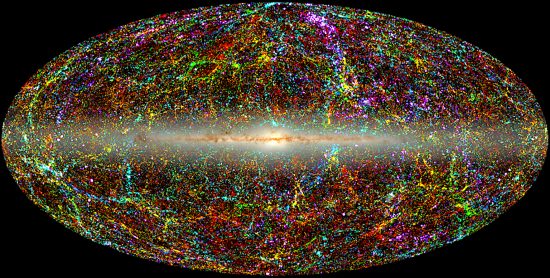
Oct 16, 2019
The Universe is not temperature dependent.
In astronomical journals and popular press releases, areas of space identified as “huge holes” are said to be completely empty of matter and energy; “colder” than any other region. According to the “redshift-equals-distance” theory, one of the voids extends for more than a billion light-years. Astronomers believe that they found the largest individual structure ever identified. In reality, the “hole” isn’t really a hole, it is an area of space where the temperature of the Cosmic Microwave Background (CMB) is lower than the surrounding region.
Arno Penzias and Robert Wilson inadvertently discovered what was later called the CMB in 1965. The now fabled experiment detected noise in a signal coming from the radio receiver they built. After cleaning out pigeon nests from the horn of the radio receiver and rewiring the system from top-to-bottom, the noise persisted. Finally, after weeks of investigation into the cause, they realized it was coming from every region of the sky and not from their receiver.
The Wilkinson Microwave Anisotropy Probe (WMAP) was launched June 30, 2001, from Cape Canaveral in an attempt at understanding some unusual telemetry returned by the Cosmic Background Explorer (COBE) satellite in 1992. Temperature fluctuations appeared in the data, which seemed to mission specialists as if there were regions of lower mass density in the Universe. Since the Big Bang theory did not account for such areas of anisotropy – matter and energy should be evenly distributed – an instrument was manufactured with higher resolution detectors. The WMAP survey was thought to verify COBE’s results.
The previously mentioned noise was later to be called the “remnant signal from the beginning of the Universe”, because it appeared to be radiating uniformly at a microwave frequency corresponding to a temperature of 2.7 Kelvin (– 270.3 Celsius). Since the expanding Universe theory was popularized by Gamow in 1948, the electromagnetic energy created in that event should have cooled and dimmed over the billions of years since it came into being. The discovery by Penzias and Wilson was thought to confirm the hypothesis.
The Electric Universe theory has an entirely different way of addressing these matters. It does not rely on unseen and undetectable matter whose existence can only be inferred. It does not violate its own gravitational cosmology by inventing an anti-gravity force so that galactic acceleration can be explained. Instead, Electric Universe theory states that what we see in the Universe is what we get. Electric charges flowing through ionized gas and dust provide the energy for the stars and present themselves in straightforward and understandable ways.
As author and Electric Universe theorist Wal Thornhill points out:
“If Arp and others are right and the Big Bang is dead, what does the Cosmic Microwave Background signify? The simplest answer, from the highly successful field of plasma cosmology, is that it represents the natural microwave radiation from electric current filaments in interstellar plasma local to the Sun. Radio astronomers have mapped the interstellar hydrogen filaments by using longer wavelength receivers. The dense thicket formed by those filaments produces a perfect fog of microwave radiation—as if we were located inside a microwave oven. Instead of the Cosmic Microwave Background, it is the Interstellar Microwave Background. That makes sense of the fact that the CMB is too smooth to account for the lumpiness of galaxies and galactic clusters in the Universe.”
So, in reality, there is no temperature fluctuation from the earliest days of the Universe. There is no CMB, (at least in the way it is reported), and there is no anti-gravity accelerating matter in the distant cosmos to almost the speed of light. Birkeland currents flowing through plasma in mega-parsec filaments ignite the stars and form spinning galactic pinwheels as far out as instruments can see.
Stephen Smith
Title derived from Charles Dickens’ Great Expectations
The Thunderbolts Picture of the Day is generously supported by the Mainwaring Archive Foundation.












